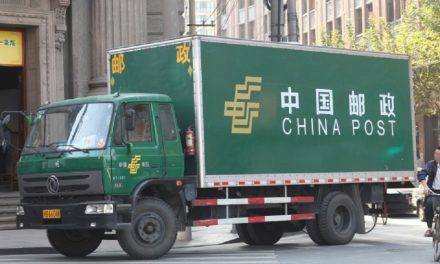
China Postal Service plans listing
Deprived of the government subsidy it has received for the past 53 years, the mainland postal service has submitted a plan to the State Council to list its six most profitable regions overseas.
National Postal Bureau (NPB) director Liu Liqing was yesterday quoted as saying it planned to inject its operations in Beijing, Shanghai, Jiangsu, Zhejiang, Fujian and Guangdong into a separate company for listing. The flotation would most likely occur in Hong Kong, the official Economic Observer newspaper reported.
Mr Liu said the six regions were the NPB’s most profitable. The listed vehicle would reportedly include all the services they offer including postal delivery, express mail, newspaper and magazine distribution and postal savings.
The purpose of the listing was to reform the NPB’s existing structure in order to bring it in line with international practices and to raise new capital.
This is the first year since 1949 that the government has not paid a subsidy to the postal service. Until 1998, it was part of the ministry which also administered the telecommunications industry, a booming sector which made up for the NPB’s chronic losses.
In that year, administration of the postal and telecommunications sectors was split and the government agreed to pay a diminishing subsidy over the next four years to cushion the impact of the divorce. In 1999 the NPB received an eight billion yuan (about HK$7.51 billion) subsidy, which subsequently reduced to five billion yuan, three billion yuan and finally one billion yuan last year.
It had a profit of 100 million yuan on revenue of 51 billion yuan, last year. But taking the subsidy into account, it actually lost 900 million yuan.
China’s postal system is one of the last state behemoths, with more than 66,600 outlets nationwide and annual losses of nearly three billion yuan on its operations below county level. The losses stem from a requirement that it provide a universal service – delivering a letter to wherever it is posted, no matter how remote or inaccessible.
Mr Liu promised that universal service would be maintained despite the enormous difficulty of doing so without a government subsidy. To this end the NPB is considering the establishment of a “universal service fund”.
Economists say obstacles to a listing include the status of the NPB’s savings system. It benefits from a larger branch network than any bank and is particularly popular with migrant workers in cities in the east and southeast who remit most of their earnings to their families.
Unwilling to lose this cash cow, the NPB has delayed a central government proposal to turn it into a bank. It wants to include the six regions’ savings units in the listed vehicle – posing legal and regulatory problems.
Another problem is how to separate the assets of the six regions from the rest of the NPB – which has long operated as a single entity – and how to interest foreign investors in many operations that either lose money or have low rates of return.
The NPB has invited foreign investment banks to act as advisers for the planned listing.













